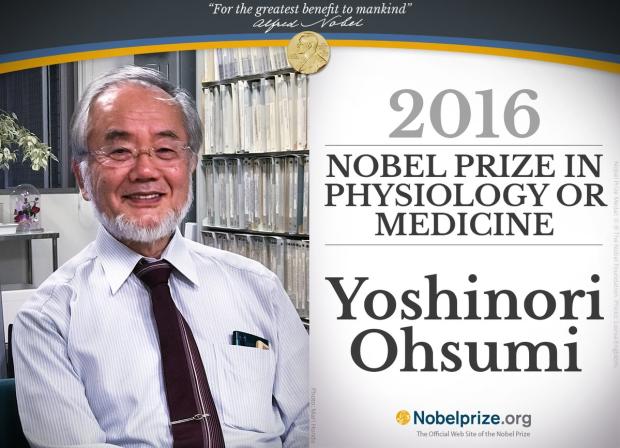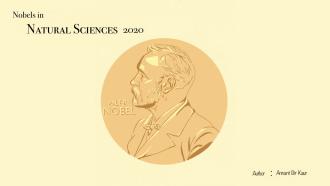
Image Credit: @NobelPrize
As Alfred Nobel quoted in his will, “For the greatest benefit to mankind”, the Nobel Assembly at Karolinska Institute, Sweden, has opened this year’s list by announcing the winner for Physiology or Medicine on Monday. Yoshinori Ohsumi from Japan has bagged the 2016 Nobel Prize in Physiology/Medicine for his “Discoveries of mechanism for Autophagy”.
Yoshinori Ohsumi was born in Fukuoka, Japan in 1945 and currently serves as Professor Emeritus at the Tokyo Institute of Technology. In 1974, after receiving his Ph.D. from the Tokyo University, he started his work on autophagy. The word autophagy is derived from Greek words - “auto” meaning “self” and “phagein” meaning “to eat”. It is a process by which cells destroy themselves when damaged or old, so that they can reuse their own components for releasing energy and building new functional parts. This concept was first observed in the 1960’s soon after scientists discovered the Lysosomes – the membranous sac like vesicles through which a cell could destroy its own contents.
In addition, scientists had also observed the presence of other small double membrane vesicles in cytoplasm only during stress, which engulfed some of the cytoplasmic material. These new vesicles were found to be playing a key role in delivering cargo to the larger lysosomes for degradation in a process called “autophagy” and the small vesicles were named as autophagosomes. But nothing much was known about the mechanisms of autophagy until Prof. Yoshinori Ohsumi came up with his series of interesting experiments in the 1990’s.
Using baker’s yeast to study the mechanism of self-destruction in cells, Prof. Ohsumi tried to visualize the accumulation of autophagosomes under a microscope by disrupting the degradation process in the vacuole that contains the lysosome. He searched for yeast cells lacking vacuolar degradation enzymes and after screening thousands of mutants, he found such yeasts and he cultured them. After inducing autophagy in them, his yeasts were accumulating autophagosomes in their vacuoles within hours. Thus, Prof.Ohsumi proved that autophagy existed in yeast cells and also devised a method to characterize the genes involved in the process, in 1992. A year later he also found that a set of 15 genes were majorly involved in regulating this stress induced autophagy in yeasts.
After this discovery of genes, Prof. Ohsumi showed how stress signals initiate a cascade of events, which results in the formation of different protein complexes. These complexes were found to control each step of the formation of autophagosome. Credits to this pioneering work, we now have a detailed understanding of molecular mechanisms of autophagy.
Autophagy is a key biological phenomenon that is required for cell differentiation during embryo development and plays a key role in providing immunity. Cells also use autophagy in removal of damaged proteins and organelles - a quality control mechanism that is critical for counteracting the negative consequences of aging. Defects in this mechanism are associated with diseases like Alzheimer’s disease, Parkinson’s disease, Type 2 diabetes and other genetic disorders. Too much of autophagy also can promote growth of tumour cells and resistance to anti cancer drugs. So understanding of this phenomenon is crucial for medicine and physiological research.
“Yoshinori Ohsumi’s discoveries have been instrumental in revealing the mechanisms of fundamental and physiological processes. And there is growing hope that this knowledge will lead to development of strategies for the treatment of many human diseases”, said Prof. Maria Masucci from Karolinska Institute, Sweden, during the announcement of the Nobel Prize. The Nobel Assembly also projected an illustration of a self-eating dragon to denote autophagy, a symbol linked to self-reliance and renewal in many mythologies. The hope is to see a great change in the field of medicine with this amazing discovery.






